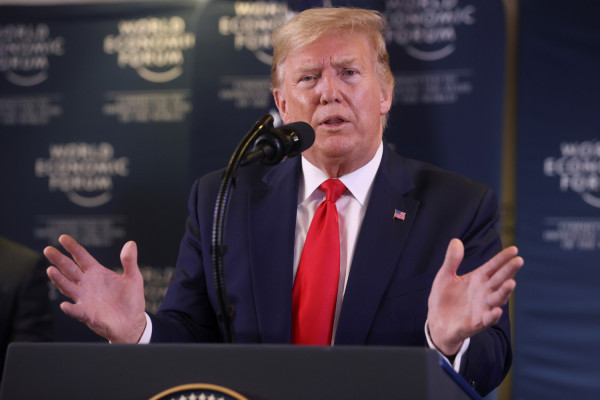Donald Trump Demanded Huge Military Response To Protests In Oval Office Meeting

During a heated debate, Donald Trump said the military should deploy 10,000 active-duty troops into the streets to quell ongoing protests surrounding the death of George Floyd, a 46-year-old black man. Floyd died after a white police officer Derek Chauvin knelt on his neck for nearly nine, while he was handcuffed and lying face down on the street.
In an interview with CBS News, a senior administration official revealed that Trump wanted the military to put a large number of active troops into the streets to suppress protestors that were demanding justice for George Floyd. Top officials including Joint Chiefs Chairman Mark Milley, Defense Secretary Mark Esper, and Attorney General William Barr opposed the demand, the official added.
In a bid to satisfy the president's demand, Esper and Milley called the governors later that day to urge them to deploy the National Guard in the respective states, according to the official. If the governors refused to call up the Guard, the official said they would have active-duty troops across the nation.
The same day, the Pentagon began deploying 1,600 active-duty troops to areas outside the District of Columbia. Later that day, Esper and Milley headed straight to the FBI's Washington Field Office which houses the command center law enforcement and military response to the protests, the official said. On the way, they received a call to visit the White House and give the president an update.
While they did not give details to the president, they were told to wait for his speech in the Rose Garden and then join him on the walk across Lafayette Park to St. John's Church. The officials said neither Esper nor Milley realized the purpose behind the walk was to organize a photo op in front of the historic church.
During Face the Nation Sunday, Barr disproved the description of the Oval Office and deemed it completely false and also denied the president insisted on putting active-duty troops to quell protests immediately, rather than keeping them on a stand-by. Trump never demanded or even advised that we need to put regular troops at that point, Barr explained.
White House director of strategic communications Alyssa Farah tweeted that Trump asked DOD to surge the National Guard and not active duty citing several nights of vandalism and torching in D.C., adding that it worked and there have been non-violent demonstrations since. After two nights of non-violent protests, Esper told 700 troops from the 82nd Airborne Division to go back to Fort Bragg and then released a statement in the Pentagon briefing room that he was never in favor of using the Insurrection Act to send active-duty troops to quell the protests.














